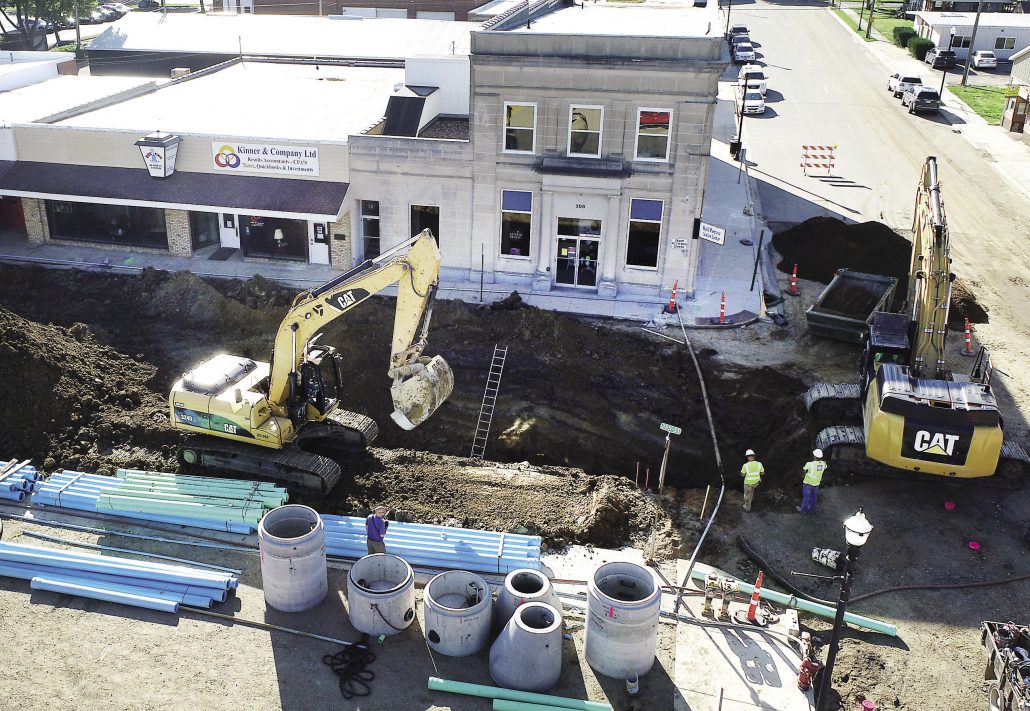
Before last week, Phase 3A-2 construction has been focused on residential streets — now, it’s downtown’s turn
By Per Peterson

Photo / Per Peterson
Downtown Tracy hasn’t been this busy in years.
But it’s not customers or their vehicles that are filling 3rd St., it’s road construction equipment.
The downtown area officially became a construction zone recently as part of the Phase 3A-2 Infrastructure Project. Duininck Construction crews have been working on 3rd St. between Rowland and Morgan for a couple weeks, and that work has continued to intensify, as crews slowly make their way south.
Tim Brown, construction administrator with Duininck, said the work being done on the block of 3rd between Rowland and Morgan so far has consisted of new sewer and water mains.
“Now we’re just going through each business, doing service lines,” he said. “We just got done with the water service line and sanitary service line for the dentist’s office.”
New service lines will go in at every downtown business location, Brown said, but abandoned lots will not be included in that process.
“Later this week we’ll be putting in storm sewer, too,” he said. “They have been doing water lines first, so they can pressure test it, get the bacteria tests and every thing they need.”
The process downtown is the same as has been implemented in residential areas around town. The big difference is there is less room to work, what with all the buildings downtown.
“It always presents a few extra challenges, just with having tighter quarters to work between building front to building front,” said ISG Engineer Kyle Renneke. “And having to replace sidewalk all the way up to doorways makes the design of the roadway a little bit more complicated, to get all the doorways to match up elevation-wise. Also, when you’re in close to the buildings, the contractor has to work a little bit more to keep everybody safe.”
Renneke said alerts are sent out to businesses to keep them abreast of construction progress; they also knock on doors to talk with business owners and work to maintain dialogue with all of them — “here’s when we’re gonna be in the neighborhood, here’s what we can do to get traffic in and out,” he said. “It’s a case-by-case basis.”
See this week’s Headlight Herald for more on this article.
